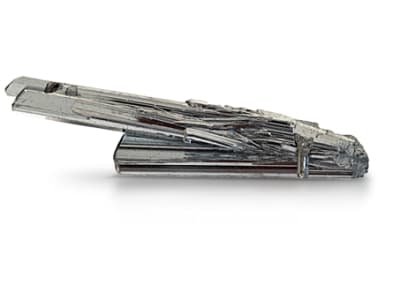Stibnite forms as delicate, elongated crystals with metallic luster that are lead-gray in color. It is an important source of antimony. In ancient times it was ground into a powder and mixed with fat to be used as the eye makeup called kohl. It was also a component in ancient flash powder.
General Information
Common Name
Stibnite
Species
Stibnite
Transparency
Opaque
Refractive Index
Over The Limit
Pleochroism
None
Hardness
2-2
Streak
Gray
Luster
Dull, Metallic
Stability
Poor
Fracture
Conchoidal, subconchoidal
Cleavage
Perfect, Imperfect
Chemical Name
Antimony Sulfide
Chemical Formula
Sb2S3
Crystal System
Orthorhombic
Chemistry Classification
Sulfide
Stibnite Colors
-
 Black
Black -
 Gray
Gray
Alternate Names
Antimonite
Countries of Origin
Romania; Unknown; China; Japan
Care
Soluble in hydrochloric and nitric acid. Do not expose to open flame as it melts at 546ºC. It is also very delicate so care must be taken not to damage specimens.
